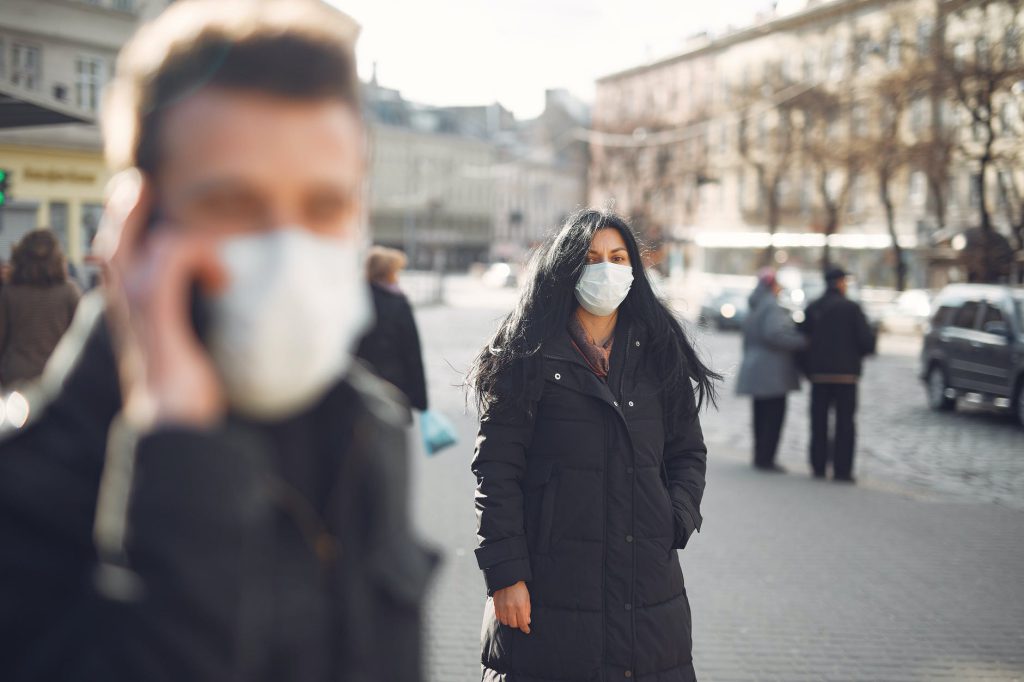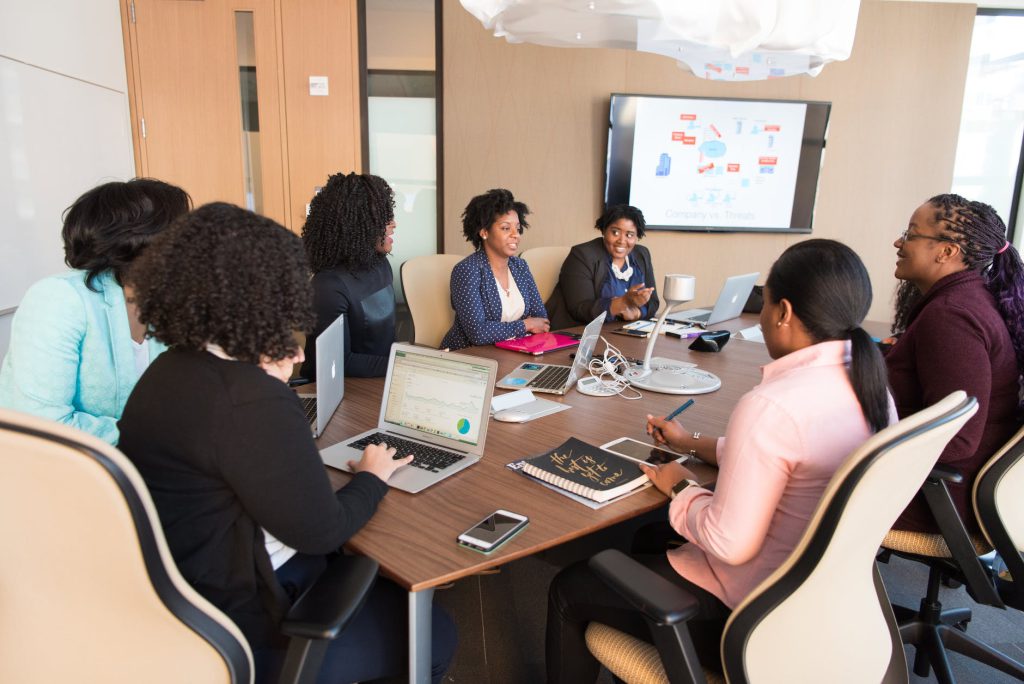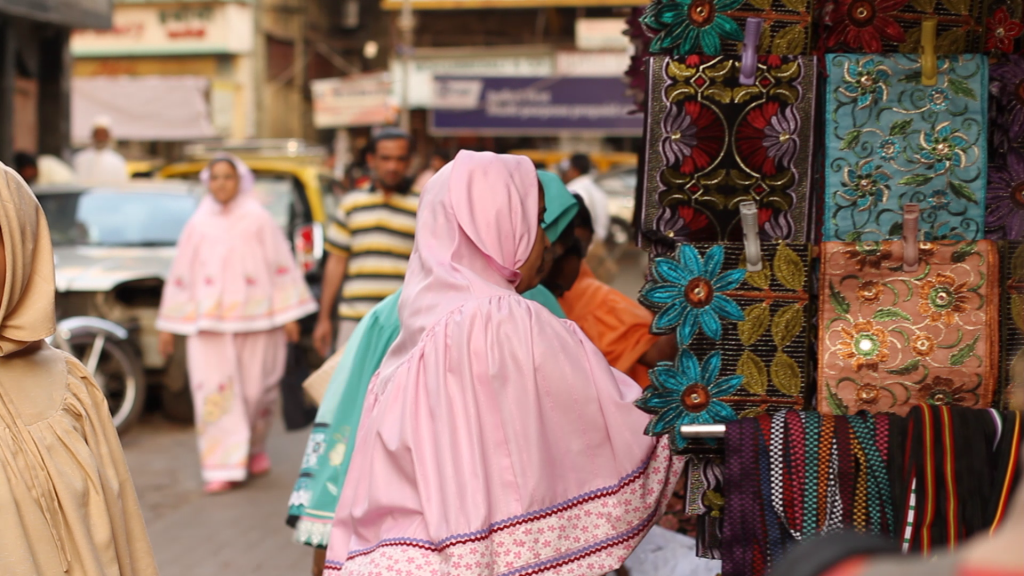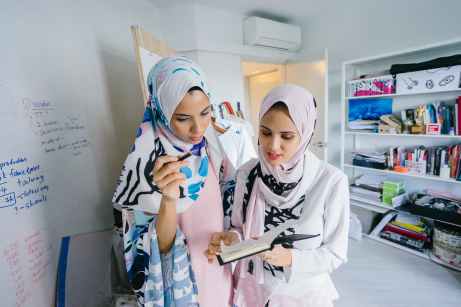How COVID-19 impacts programs devoted to ending gender-based violence, including female genital cutting

By Hunter Kessous The COVID-19 pandemic has turned the world upside down, so it is unsurprising that gender-based violence (GBV), including female genital cutting (FGC), has also been affected. Hidden Scars and Magool came together to co-host the Africa Led Movement Webinar series. In May, I had the pleasure of attending the second part of the series which addressed GBV during the current pandemic. Speakers included Bethel Tadesse, Hidden Scars; Leyla Hussein, Magool; Wanjiru Wahome, Samburu Girls Foundation; Christine Alfons, Safe Engage Foundation; and Domtila Chesang, I Am Responsible Foundation (I Rep Foundation). Three panelists, Wahome, Alfons and Chesang, discussed the impact of COVID-19 on their work. Wahome and Chesang have both noticed an increase in GBV, specifically FGC, rape, and domestic violence. They add that the Kenyan government has forcibly closed all safe houses, sending thousands of girls back to their homes. Coupled with the closure of schools and the restriction of movement, more girls and women are stuck in places where they are not safe or comfortable. Additionally, it seems as if GBV may be the least of the government’s priorities in Kenya, as all resources and focus are currently being devoted to the pandemic. Alfons noted that in her region of Kenya, FGC only occurs every two years. Therefore, FGC is not rising in cases at the moment, but child marriage has increased significantly. The panelists were asked how their organizations have responded to the rise in violence prompted by the pandemic. All three are using the radio as a tool to prevent FGC by interviewing healthcare professionals and community leaders on air and playing jingles to remind listeners not to cut their girls. Upon hearing the devastating news of the closed rescue houses, I was relieved to hear that Wahome and Chesang have been going door-to-door to check on the girls they had to send back home. Alfons has been working to get girls sanitary products. Additionally, Alfons’ volunteers are making masks and supplying them to at-risk girls and women. In a vulnerable moment, they spoke with honesty about how the pandemic has personally impacted them. They shared the sentiment that their work has been frustrating and emotionally draining. I’m certain many advocactes would agree when Chesang stated this is not a job; it is personal, and you take it with you wherever you go. Alfons relies on other activists to stay sane. The panelists were asked what gives them hope to continue, and I found Wahome’s answer to be particularly poignant. She says when a girl is rescued, at the time she is viewed as a wife, but within a few months she transforms back into a child. Finally, the panelists shared what their asks would be if they could ask anything at all of the viewers. Chesang wishes for a car, or even just fuel, to allow her to visit at-risk girls and women more easily and more often. Wahome’s organization is in need of food to take the girls, as the virus has left many families without any income. Alfonso asks for sanitary pads, food, and assistance in building a website to better spread their message and work. If any readers can offer assistance, please visit their websites (linked above) or reach out to Bethel Tadesse for contact information. The webinar ended with an important call to action: keep amplifying the voices of the grassroots organizations working to end FGC and GBV. For more information on how the virus is impacting programs devoted to ending FGC and GBV, read here.
Why human rights education, including FGC, is crucial for American classrooms

By Hunter Kessous Throughout high school, whenever I would tell people about my future goals to help survivors of female genital cutting (FGC), nine times out of ten the response would be, “What is FGC?” This is a question I never minded. As a human rights advocate, I’ve always taken the opportunity to educate my friends about this topic. I never expected that one day my peers at university would claim my desire to end the practice of FGC was neocolonialist, imperialist and simply wrong. I was shocked. I had read all about the harm that FGC causes to girls and women globally. I know, of course, that communities that practice FGC are protective of their tradition. However, I was completely unprepared to be met with hostility by my classmates. Soon, I noticed a trend: all of the students who were opposed to ending FGC were in the anthropology department. This left me even more puzzled—my experience with anthropology had been positive. We learned that culture is meant to grow and change over time. We learned about cultural relativism: the importance of viewing cultural practices through the lens of the culture itself. All of these things aligned with my view of FGC and approach toward abandonment. FGC is a cultural practice, but that doesn’t mean it can and should not change. Understanding the way communities that practice FGC view and justify their tradition is key to effectively encouraging abandonment of FGC. Why, then, do some anthropology students believe there should be no interventions to end FGC? Finally, I got answers. My global health professor led a discussion about FGC in class, which quickly turned into a ferocious debate between myself and three other students. Nearly all of what they said was untrue: FGC is a religious practice; medicalization makes FGC safe; and FGC is an African practice so we should not condemn it. FGC is often justified with religion, but it is not technically a religious practice. It pre-dates Islam and Christianity. Medicalization does not remove many of the physical and psychological dangers of FGC. It is a global practice-–happening even within the U.S.–that we should strive toward ending by allowing those from the communities that practice FGC to lead the initiative. These simple corrections were not well-received during the debate, potentially because the anthropology professors may have refused to take a stance on FGC as a human rights violation .. Herein lies the danger: misconceptions about FGC become all the more harmful when they are propagated by trusted sources. My experience showed me that the accuracy of information about FGC being taught in college classrooms desperately needs to be improved. Moreover, there is a general need for increased education about FGC in American classrooms. Public policy in England, as well as the state of Virginia (thanks to Angela Peabody of Global Woman P.E.A.C.E. Foundation), mandate that the harms, laws, and resources surrounding FGC be taught in sexual education courses for middle and high school students. These laws are important because we are raising the next generation of advocates. By teaching about FGC in schools accurately, we are empowering young people to be knowledgeable of and speak out against a human rights violation. This can and should be done through mandating FGC education in sex education classes and improving the accuracy of it being taught in university courses. To learn more about FGC, common misconceptions, and the importance of nationwide classroom education as a tool for FGC prevention, join Sahiyo for an educational webinar on July 30th at 1pm EST! Follow this link to learn more and register.
Population Council hosts second webinar on FGM/C research

By Hunter Kessous The Population Council recently hosted a fascinating webinar, “Using Research to Understand and Accelerate The Abandonment of Female Genital Mutilation/Cutting (FGM/C).” It was the second of two webinars from a series titled, “Evidence to End FGM/C: Research to Help Girls and Women Thrive.” The most recent webinar reported some of the findings of a research consortium that began in 2015 and culminated this year. The research spanned eight countries, studying FGM/C, and researched how initiatives to end the practice may be optimized. Speakers included Bettina Shell-Duncan, University of Washington Seattle (Moderator); Nada Wahba, Population Council, Egypt; Dennis Matanda, Population Council, Kenya; P. Stanley Yoder, Medical Anthropologist; and Nafissatou J. Diop, UNFPA. Dr. Matanda spoke on the use of data to inform programming. His research spanned Kenya, Nigeria, and Senegal, and sought to map hotspots for FGM/C. The data pinpointed the areas of each country in which FGM/C is most prevalent. Dr. Matanda’s findings also reveal how factors relating to a girl’s mother influence the likelihood that she will be cut. The results varied by region, but some of these factors included the mother’s ethnic group, her beliefs surrounding FGM/C, and if she herself was cut. The most important takeaway from Dr. Matanda’s research is that considering only national data masks local variations. He recommends linking regional data to subnational policies and efforts to prevent FGM/C from occuring to future generations of girls. Medical anthropologist Dr. Yoder responded to Dr. Matanda’s research, remarking that Kenya was the only country of the three where the level of education of the mother was found to have an effect on the risk of a girl being cut. He proposes modernization, the shift from traditional and rural to secular and urban, as an explanation for Dr. Matanda’s findings. I believe that Dr. Yoder’s theory illuminates a need for ongoing research on this subject that correlates the changes in Kenya’s social, economic, and political growth to changes in the continuation of FGM/C. Following Dr. Yoder’s analysis, Nada Wahba presented her research on the intersection of FGM/C and gender in Egypt. Hers was a qualitative study with multiple intriguing findings. One discovery that I found especially important was that conflicted mothers have been turning to doctors to decide on their behalf whether or not their daughter should be cut. This could be a result of increasing medicalization of FGM/C in Egypt. Another interesting finding was that if either one of the parents, whether it be the mother or the father, does not want their daughter to be cut, then she will not undergo FGM/C. While many programs working to end FGM/C target the mother as the decision maker, Wahba’s research clearly shows that mothers are not the only influential group. For this reason, more anti-FGM/C programs should shift their efforts to also educate fathers and doctors, particularly in regions with high rates of medicalization. Nafissatou Diop followed Wahba’s presentation to provide analysis of the research. Diop feels strongly that FGM/C is rooted in gender inequalities, yet not nearly enough programs acknowledge this fact. She claims many programs that address cutting are gender blind, focusing too much on the consequences of FGM/C in their approach rather than the root causes for why FGM/C continues in the first place. Diop’s comments were a strong call to action for all advocates to take a gender transformative approach in order to achieve abandonment of FGM/C. More information about this research project can be found here. The webinar can be viewed here.
Population Council hosts webinar highlighting research on FGM/C

By Hunter Kessous On May 14th, the Population Council hosted the first of two webinars comprising a series titled, “Evidence to End FGM/C: Research to Help Girls and Women Thrive.” Beginning in 2015 and culminating this year, the Population Council has led a research consortium spanning eight countries that studied the practice of female genital mutilation/cutting (FGM/C) and how initiatives to end the practice may be optimized. The first webinar, “Improving the Health and Legal System’s Response to FGM/C,” allowed researchers to present the findings of certain studies. Speakers included Bettina Shell-Duncan, University of Washington; Jacinta Muteshi-Strachan, Population Council; Agnes Meroka-Mutua, University of Nairobi; Samuel Kimani, University of Nairobi; Wisal Ahmed, World Health Organization; and Flavia Mwangovya, Equality Now. Dr. Muteshi-Strachan explained the four themes of the research consortium: the first being to build the picture by exploring the who, what, where, when, and why of FGM/C, and how these details are changing. The second theme detailed interventions to end FGM/C: what is working, where and why. The wider impacts of FGM/C and interventions were explored. Finally, the fourth theme assessed what constitutes valid measurements of change. This is an exciting project, as it not only expands the body of research on FGM/C, but also adds new, fresh insight. FGM/C and the law was the first research topic covered. Dr. Meroka-Mutua spoke on the findings of her research in Burkina Faso, Mali, and Kenya. One discovery showed that the efficacy of a law can be limited by nature, content, administration and implementation. An interesting take away from this project was that laws working to end FGM/C can be more effective if written and implemented in a manner than does not seem to attack the cultures of the practicing communities. With the news of Sudan’s recent outlaw of FGM/C and the thriving, ongoing work toward passing more bans, Dr. Meroka-Mutua’s research feels all the more relevant and important. Going forward, policy makers would better serve their communities by keeping in mind these findings regarding the most effective wording for new laws. Dr. Kimani presented his research assessing the health system response to FGM/C in Kenya and Nigeria, through both prevention and provision of curative services. The findings showed a need to integrate FGM/C interventions into existing health systems platforms, to perform targeted training of health care providers, and to improve data systems. Based off this research, nonprofits could expand their efforts into the healthcare setting, or perhaps new nonprofits will be created in order to tackle preventing FGM/C through health systems platforms. Wisal Ahmed discussed the World Health Organization’s (WHO) action plans. One of these plans includes developing tools for health care providers to better support their communities. The most exciting of WHO’s action plans includes an FGM Cost Calculator, a data tool that reveals the savings in health costs associated with abandonment of FGM/C, proving the economic burdens of the practice. Finally, Ms. Mwangovya of Equality Now offered perspective on implementing research into programs and policies working to end FGM/C. She advises nuancing and contextualizing research, including thinking critically about the subjects used in a particular research study and how they compare (culturally, religiously, geographically, etc.) to the population one is working with is necessary to best optimize the results of the research. More information about this research project can be found here. The webinar can be viewed here.
Farzana Esmail hosts fireside chat on FGC with co-founder of Sahiyo

By Hunter Kessous Mariya Taher, U.S. Executive Director and co-founder of Sahiyo, and Farzana Esmail, survivor, mother and advocate, sat down together to have a virtual fireside chat on female genital cutting: part interview, part sincere exchange of stories, and part education. Upon introducing Mariya’s background, Farzana asks her to call on her expertise to explain female genital cutting (FGC) to the audience, using World Health Organization classifications and statistics regarding global practice. Throughout the chat, Mariya provides essential background on FGC, making this a great video to watch for people of varying knowledge levels on FGC. Farzana described her experience of discovering through Sahiyo’s Voices to End FGM/C that FGC is practiced not only in the Bohra community, but in Africa as well. Mariya explained that this misconception exists only because Africa is where the bulk of the research on FGC was occurring until recently. FGC has been recorded as being practiced in at least 92 countries. Sahiyo conducted research on the Bohra community and discovered 80% of women from their sample had been cut. Another finding of that same study was that 81% of women did not want FGC to continue for the next generation. Farzana asked the important question of why FGC continues to be practiced if so many women feel this way. Mariya used the concept of pluralistic ignorance to explain: the tradition lives on because nobody in the community talks about FGC and therefore, nobody knows that other women are also suffering and do not want to cut their daughters. Sahiyo’s social change platform was born to amplify the stories and voices of survivors. Mariya references a study finding that in order to achieve social change, 25% of a community is needed to reach a certain tipping point, which is slowly happening within the Bohra community. Mariya also discussed the shift from the Millenium Development Goals (MDGs) to the Sustainable Development Goals (SDGs) – an important global health policy. The MDGs were a UN framework created in 2000 that enlisted all countries who signed on to put an end to various issues globally and to measure their achievement towards these goals. The MDG goal to abandon FGC only applied to 29 or 30 relevant countries, which were mostly within Africa and the Middle East. The issue here is that FGC is a global issue. It is prevalent in South Asia and is practiced in at least 92 countries. The SDGs, which followed the MDGs, finally recognized that FGC is a global practice. The fifth SDG specifically calls on countries to decrease FGC globally and measure the prevalence rates within their communities. In a similar vein to the importance of recognizing FGC as a global practice, Mariya shares the importance of involving men in the movement to end FGC. Sahiyo amplifies not only the voices of survivors, but also of fathers, brothers, and husbands of survivors. The goal is to show that FGC negatively impacts entire communities, not only the women who undergo FGC. This is an important action toward abandoning FGC. Revealing FGC to be more than just a women’s issue or a cultural issue means every single person has the right and responsibility to get involved in the movement to end FGC. Many are talking about the very important issue of an increase in gender-based violence as a result of the pandemic and the lockdown. Mariya has not noticed an increase in FGC within Asian communities or within the U.S., but instead notes the distress that the lockdown causes many FGC survivors. The isolation makes it harder to seek help, and the sense of a loss of control can trigger a trauma response for survivors. It’s important to draw attention to this issue in order to provide survivors with the services they need. View this eye opening discussion here.
Part II–Medicalising khatna within the Bohra community: A Struggle of Tradition and Modernity

By Fatema Kakal (This is Part II in a series about female genital cutting within the Bohra community. Read Part I here.) While religion and religious leaders, along with culture and tradition can be drivers of female genital mutilation/cutting (FGM/C), law can play an additional critical role in disincentivizing khatna. The arrests in the U.S. and Australia due to the medicalisation of FGM/C, led to the reiteration of laws in countries that prohibited FGM/C. Laws in many countries around the world critique FGM/C as a human rights violation and child abuse. While some consider these laws to be racist, this leads to a feeling of marginalization and alienation due to the attack on traditional and cultural value systems. People became more conscious of the laws, and began reconsidering khatna, because of the risks involved. These laws helped initiate dialogue and discourse. The Bohras are a fairly progressive and modern community, where traditions are not separate from their modernity, but play a crucial role in consolidating their Bohra identity. Continuing khatna defies Western notions of modernity and embraces tradition. Instead of abandoning tradition, the Bohras are renegotiating the traditional practice and embrace modernity through medicalising khatna. Medicalisation is a tool to modernize and legitimize khatna, but also serves as a technique for social control. By supporting medicalisation, validated by modernity, and establishing khatna as a safe and religious practice, the clergy is reinventing and perpetuating khatna as a traditional practice, responding to external pressures that threatened to marginalize or alienate the Bohras. The clergy is thus reiterating and reinforcing Bohra identity as being one of modernity and tradition. Thus, khatna was no longer taboo, and a growing discourse has led to people taking increasingly different positions, and making more conscious decisions about continuing the practice. While mothers and women of the family used to be primary decision-makers of continuing khatna for the daughters of the family, fathers are increasingly involved in making the decision. It is no longer an extremely hidden practice, and parents do research before making the decision whether or not to cut their daughters. While some people follow mandates by religious leaders, others find it important to follow the law. People are conscious of the potential harm. For the devout, tradition must be followed, but by ensuring that harm is minimized. They choose to visit medical professions for khatna. For others, the risks of khatna outweigh its religious importance, and they have decided to abandon the practice. For others, consent is crucial, and believe khatna requires a girl’s consent. Since children are incapable of giving informed consent, people believe their daughters can choose to undergo the procedure as an adult, thereby making an informed decision. Thus, the religious clergy’s pastoral power plays an important role in influencing people’s decision to continue khatna. Medicalisation of FGM/C can help negotiate embracing tradition and modernity. However, law also plays an important role in helping end the practice. The growing discourse around the practice has led to people making informed, conscious decisions about following khatna. FGM/C is conceptualized as a health and human rights issue, and a children’s rights issue, which is universal. Thus, efforts against FGM/C should be focused on balancing universalization of children’s rights, human rights, and multiculturalism. Additionally, law plays a crucial role, because legislation can provide a universal stance against the practice, which can be used as a strong justification against it. Thus, community-wide change is required for individual families to abandon FGM/C, through education and activism from within the community, backed by law.
Sri Lanka’s first survey on FGM/C: Survivors need space to talk and access to medical care

By Jumana S. “It should not be up to the elders to stamp the body of a girl child at the age of seven, (a process that is irreversible irrespective of the extent of damage), and decide what her religious convictions should be.” – Jamila, Dawoodi Bohra survivor of FGC, Colombo This fundamental right that every thinking individual commands is articulated by a survivor of female genital cutting (FGC) in a first of its kind report for the country titled, “Towards Understanding Female Genital Cutting in Sri Lanka.” The report, published by the Family Planning Association of Sri Lanka, is the very first research study detailing the status of FGC in the country. It highlights the absence of dialogue, absence of awareness of the issue among medical practitioners, and also the unique political situation in the country that makes public discussion on the issue susceptible to ethnic controversy. Released in December 2019, this detailed study interviewed 26 survivors with three main objectives: to understand the practice of FGC from the perspective of survivors; to interpret the practice in relation to their health, sexual pleasure, bodily integrity and relationship with family, community and faith; and to engage medical practitioners to help with solutions with the findings of the first two objectives. Amongst the many shocking findings of the study, what overwhelms is the absolute absence of dialogue on the subject until about three years ago in the country. Hence, not only the survivors do not have a recourse for psychological counselling for their personal trauma, but the medical fraternity is also not equipped to deal with complications arising due because of it in sexual health and childbirth. “Medical professionals were not aware of the practice until recently, and in the belief that it does not take place, had not looked for signs of it and it did not form part of routine examinations that are usually centered on reproductive concerns. Further that it may be difficult to observe, most doctors had not received formal training on the practice in Sri Lanka,” the report states. As for the wider dialogue and understanding of the issue, the report notes that, “It is in the last few years – from 2016 onwards – that the practice of female genital cutting has surfaced in public dialogue in Sri Lanka, including in the media. A few women, primarily from the Dawoodi Bohra Muslim community, came forward to speak about their experiences and ask the state for a response to stop this practice.” However, what preceded this, as recently as 2008, was a circular by the All Ceylon Jamiyyathul Ulama (ACJU) of Sri Lanka, that had issued a fatwa on ‘female circumcision’ in response to a query from a member of the public, saying it is obligatory and recommended, citing religious teachings as well as the view that circumcision is important to maintain cleanliness of the genitals and ‘for enjoyment in family life’ (ACJU, 2008). In the consultation, 23 out of 26 survivors (88%) said their influencer was a woman with 17 of them claiming it was their mother. The justification for the cutting given by the respondents were that it is perceived as a religious requirement; a means of establishing ‘Muslim identity’; for controling women’s sexual feelings; medically beneficial; a customary ritual; for improving sexual partners’ interest; and for improving sexual experience of the woman. The consultations revealed a notable trend of very little conviction and understanding of why the practice was followed. The reasons were not always strongly held and the justifications often relied on the interpretation of theological positions. Based on consultations, the researchers came up with six observations. The key is the absence of space for survivors to reflect and talk. “Women need spaces, conversation starters, information and solidarity to navigate the complexities that surfaced,” the report claims. Two critical observations are about the absence of formal training on the practice and the reluctance of medical professionals to engage. “FGC was not part of the medical training received in Sri Lanka,” as noted in the observations. “All medical professionals in the consultations stated they had not received training on the issue.” Moreover, explaining the reluctance of the medical fraternity in engaging with the issue, the report observed, “Medical professionals expressed a reluctance to speak or engage publicly on the practice for the reason that such measures may be misconstrued as measures motivated by religious intolerance targeting a minority community. It spoke to the sense that the political context was not favourable to the Muslim community and there were strong possibilities that disruptive elements would create opportunity for mischief causing victimisation of Muslims, and drawing medical professionals and institutions into political conflicts.” A unique observation that comes out is the context of the dialogue in the incumbent political atmosphere in the country. The report underlines this at outset, as well as in the conclusion, that while addressing the issue, one needs to be “sensitive to the local context of intolerance and possible victimisation that public discussion of the issue may lead to.” The report, in its final recommendations, urges for “a non-judgmental and non-discriminatory approach for working on FGC in Sri Lanka.” Another recommendation that stands out is its insistence on understanding and addressing concerns raised by women of the Dawoodi Bohra community, “as the experiences of Dawoodi Bohra women of FGC in this consultation appears to be of a more severe form than that practiced by others in Sri Lanka.”
Khatna within the Bohra community: A Struggle of Tradition and Modernity

By Fatema Kakal (This is Part I in a series about female genital cutting within the Bohra community. Read Part II here) The Bohra Muslims, who have the reputation of being modern and progressive, secretly practice khatna, or female genital mutilation/cutting (FGM/C) within India, as well as in other parts of the world. I learned about this over dinner with my family when I was 17. A woman who went by the pseudonym of Tasleem had recently filed the first public petition asking the Syedna (High Priest/religious leader of the Bohra community) to stop practicing khatna. While it shocked me, it also left me intrigued, wondering why this community continues such a harmful practice. A few years later, as I was pursuing my postgraduate degree, I had the opportunity to answer the questions that my 17-year-old self had. For my Masters dissertation, I decided to use a new lens to understand the community better, and get a deeper insight into what could be the factors influencing the Bohras to continue khatna. As I worked on my research, I read about FGM/C – a lot. I also read about the Bohra community from an ethnographic lens. I reviewed literature, debates and discourses, narratives of survivors, and conducted interviews with activists working to end FGM/C (from Sahiyo and other organisations). I used French social theorist Michel Foucault’s concepts of sexuality, biopower and pastoral power to understand FGM/C. Religion and religious power can often be political, and can be woven through various forms, like the sensual, corporeal and the imaginary. Religious leaders are crucial here, who are defined by their status within religion. Thus, religious leaders have pastoral power where they lead, supervise and guide people. Pastoral power operates through the body, forming a locus for biopower, a form of control over people’s bodies. Religion uses sexuality as a mechanism for control, discipline and policing bodies. FGM/C then, is a practice used by religious leaders to control women and children’s bodies and sexuality. I used Tammary Esho’s framework of FGM/C as a socio-cultural-symbolic nexus. Esho has conduced extensive research on FGM/C and sexual and reproductive health and rights. It is a culturally mediated process of socialization, that transfuses gendered identity. Khatna is a cultural practice passed down through generations to socialize girls into the community. The pain felt during the cutting is considered a rite of passage and is symbolic of fertility and womanhood. It is meant to define a woman and her femininity, and her identity as a Bohra woman. To understand how these concepts actually applied to khatna and the Bohra community, I analysed narratives of survivors collected and shared by Sahiyo and We Speak Out in their reports, and Goswami’s documentary A Pinch of Skin, I found a few overarching themes within their stories. Khatna was seen as a religious and traditional practice, and was considered to be a tool to control women’s sexuality, and maintain morality. Most of the survivors’ experiences involved traditional cutting by a dai or a midwife, in unhygienic conditions; where mothers and other women in the family played a vital role. It was a highly secretive and taboo practice, but normalized and obligatory, and passed down through generations. Many women claimed to feel anger and shame, remembered it being painful, and asserted it affected their sexual lives, and crucially, being a traumatic event in their lives. I interviewed activists as key informants who highlighted that the silence around khatna was breaking – with Tasleem’s petition in 2012, and the arrests in the United States and Australia. Religious leaders also began addressing it through sermons and letters issued to community members. The public interest litigation in the Indian Supreme Court in 2017 and the growing anti-FGM/C movement rising from within the community were important for people to hear different voices around khatna. This in turn, led to a shift in the rationale for the practice. While it was earlier believed that it controls women’s sexuality, the Bohra clergy was increasingly scrutinized for controlling women’s bodies. The clergy changed the justification behind the practice, by claiming it is a religious practice and a marker of Bohra identity. The growing anti-khatna movement was also considered an attack by Westernization. Thus, continuing khatna became a statement defying Western notions of appropriate religious customs and traditions. The Bohra clergy encourages people to visit medical professionals to have their daughters cut safely, promoting medicalisation. Medical facilities are increasingly accessible for people in the Bohra community, especially in big cities, who claim to do the cutting in a safer, hygienic way, thus perceived to be potentially minimizing risk and trauma. The Bohra clergy is an important agent in the continuation of khatna. People’s lives are heavily influenced by the Syedna and the clergy due to their pastoral power over the community. They are deeply involved in people’s lives, and their pastoral power has political power. Khatna is a form of control over girls’ bodies and sexuality, which is considered aberrant. Thus, the clergy enforces biopower through khatna, to ensure women uphold values of fidelity and morality. People in the community however, look at khatna at a socio-cultural-symbolic nexus. Khatna is significant for forming a girl’s identity as a Bohra woman, and has cultural and symbolic significance as a rite of passage. Women are bearers of culture, and it is a tradition passed down through generations. Thus, khatna continues to be practiced in the Bohra community, due to social, cultural and religious norms of womanhood, purity and sexuality. The clergy has significant influence over the community and the family. Law can play a crucial role in discouraging people from continuing khatna. Thus, in order to end the practice, it is important to engage the various stakeholders in the community who protect the practice, especially women who are often primary decision-makers for children to undergo khatna.
Asia Network to End FGM/C calls for your participation

Malaysian NGO Asian Pacific Resource and Research Centre for Women (ARROW) and British charity Orchid Project are jointly developing a new Asia Network to End FGM/C, to strengthen movements to end the practice of FGC in Asian communities. To shape this network and its priorities, all interested organisations, activists, and stakeholders working in the region on FGM/C or related issues in Asia are invited to fill out this consultation survey. The closing date for this survey will be 22nd December 2019.
Here’s what a new study says about female genital cutting in Malaysia

By Zahra Qaiyumi Female genital cutting (FGC) is prevalent among Muslim women in rural Malaysia, and many of them believe the practice is a religious obligation. Ironically, several religious leaders in the country insist that female genital cutting is not an Islamic requirement at all. These are some of the major findings of a new research study on FGC in Malaysia, conducted by Abdul Rashid and Yufu Iguchi in 2018. The study was conducted in two rural majority Muslim areas of Kedah and Penang in the Northern region of Peninsular Malaysia. The study consisted of survey data collected from 605 participants, focus groups held with a smaller subset of the participants, and interviews with 8 traditional practitioners who perform or performed FGC. Additionally, 2 interviews were conducted with Muftis, who are religious scholars or jurists qualified to issue Islamic legal opinions in Malaysia. The major findings of the study are below. Prevalence and type of FGC: Almost all participants (99.3%) had undergone FGC at an early age and wanted FGC to continue. The predominant form of FGC practiced in Malaysia is type IV. The paper defines this as the tip of the clitoris being nicked using a pen-knife or razor. Age at which FGC was conducted: The median age of the participants at the time of FGC was 6 years old, which is also the median age the participants felt was the suitable age FGC should be performed. However, the authors suggest that children as young as 2 months old undergo FGC in Malaysia. Medicalization of the practice: In general, older participants had FGC performed on them by traditional practitioners as compared with younger participants. Younger participants were of the opinion that doctors should conduct FGC as compared with older participants who preferred traditional practitioners. More participants from the younger group would permit doctors to perform FGC on their children as compared with the older group. More of the practice is being conducted in clinics by physicians because of the scarcity of traditional practitioners. Reasons for the practice and its continuation: The most common reasons for FGC among the participants surveyed are hygiene (25.0%), health (24.0%) and religious obligation (23.0%). A majority of the participants believe FGC is a requirement in religion (wajib), whereas the traditional practitioners and Mufti’s who are responsible for issuing edicts related to religious matters say it is not a religious requirement. Future directions: It is encouraging that traditional practitioners and Mufti’s believe FGC is not a religious requirement. Perhaps this can be used as a tool to better educate the community about the practice of FGC and ultimately bring an end to the practice. Read the complete study on FGC in Malaysia here.
